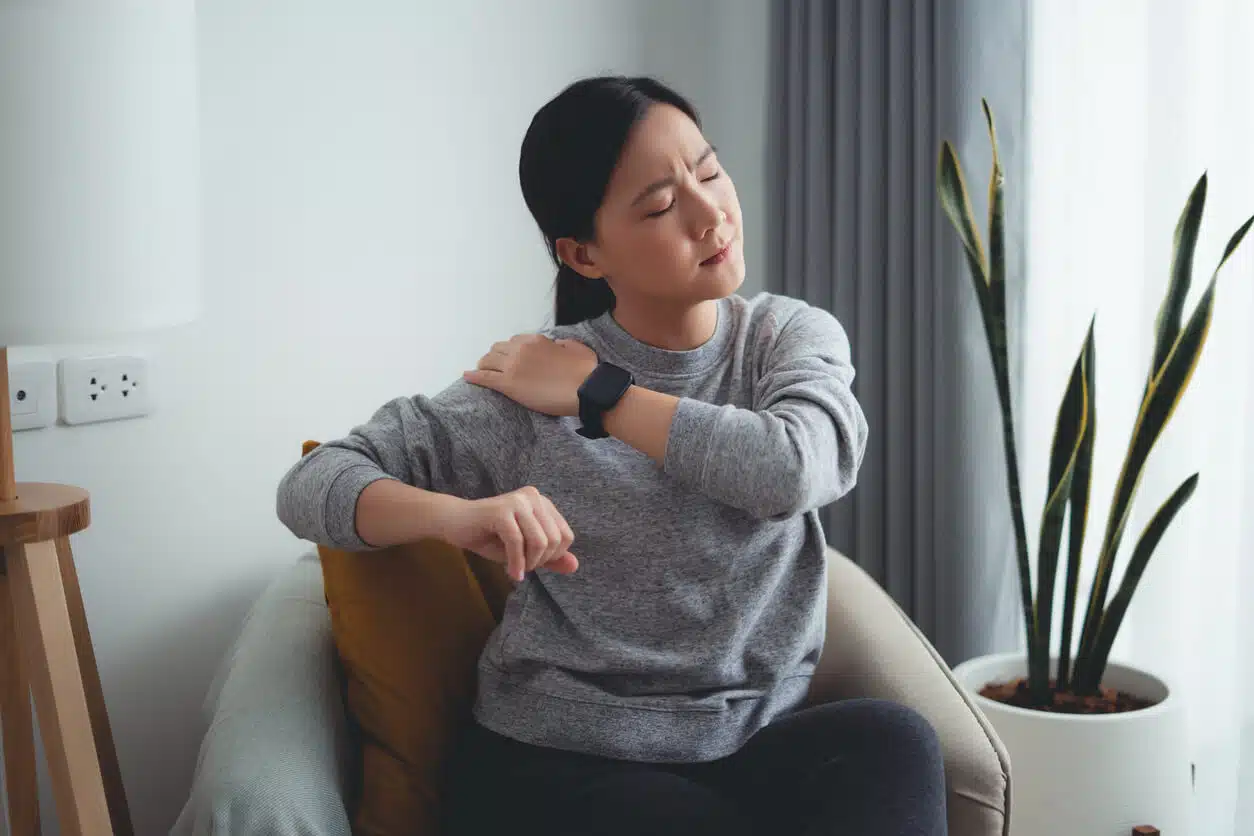
You may need rotator cuff repair surgery if you have chronic shoulder pain. If you live an active lifestyle, surgery may be the surest way to get back to normal shoulder function.
A rotator cuff repair involves repairing the tear to the rotator cuff tendons. Complete recovery from surgery involves achieving milestones to ensure proper healing. Understanding these milestones and the recovery process can help patients navigate their rehabilitation journey effectively.
Below, we talk about the different recovery milestones to help with charting your post-op progress.
Immediate Post-Operative Care (Days 1-7)
Immediately following rotator cuff repair surgery, patients typically experience pain and discomfort. Pain management techniques, including medications and ice therapy, are used to alleviate symptoms. The shoulder may be immobilized with a sling to protect the area and promote healing.
Improving Range of Motion (Weeks 1-6)
Early rehabilitation focuses on regaining range of motion in the shoulder joint. Physical therapy begins soon after surgery, with gentle exercises and passive movements to prevent stiffness and promote healing. The therapist guides the patient through exercises designed to gradually increase shoulder mobility.
Progression to the next phase is based on the ability to perform passive range of motion exercises without pain or discomfort.
Improving Strength (Weeks 6-12)
As healing progresses, strengthening exercises become a key component of rehabilitation. These exercises aim to rebuild muscle strength in the shoulder and surrounding muscles. The physical therapist will prescribe exercises tailored to the individual’s condition and progress, gradually increasing resistance as tolerated.
Resistance is gradually increased based on the ability to perform exercises with proper form and minimal discomfort.
Return to Functional Activities (Months 3-6)
The goal of rehabilitation is to restore shoulder function for daily activities and, if applicable, sports or work-related tasks. Therapists work with patients to regain strength, endurance, and coordination necessary for functional movements. Patients are encouraged to resume activities gradually, following their surgeon’s guidance to prevent re-injury.
The readiness to move on is determined by achieving functional milestones. An example is the ability to perform specific tasks without significant pain or limitation.
Monitoring the Healing Progress Throughout Recovery
Regular follow-up appointments with the surgeon are essential to monitor healing progress and assess recovery milestones. During these visits, the surgeon evaluates range of motion, strength, and overall shoulder function. X-rays or MRI scans may be used to assess the integrity of the repair and ensure it is healing properly.
Clearance to progress to the next phase is based on the surgeon’s assessment of healing progress and stability.
Potential Complications and Precautions Throughout Recovery
While most patients recover well from rotator cuff repair surgery, complications such as infection, stiffness, or re-tears can occur. It is important for patients to follow post-operative instructions carefully. These include information on wound care, medication management, and activity restrictions.
Patients should report any unusual or new symptoms to their surgeon. Any signs of complications may delay progression to the next phase until resolved.
Long-Term Rehabilitation Goals (Beyond 6 Months)
Long-term rehabilitation goals focus on achieving full shoulder function and preventing future injuries. Patients continue with strengthening and stretching exercises to maintain muscle balance and joint stability. They are educated on proper posture, body mechanics, and techniques to avoid overuse or strain on the repaired shoulder.
Progression to more advanced exercises is based on achieving strength and endurance goals set by the therapist.
Patient Education and Support Throughout Recovery
Patient education plays a crucial role in successful rehabilitation. Patients are educated about the surgical procedure, expected recovery timeline, and potential challenges. They are encouraged to actively participate in their rehabilitation process and adhere to prescribed exercises and activity modifications.
Readiness to advance is determined by the understanding of rehabilitation goals and the ability to follow the program.
Anyone undergoing rotator cuff repair should not hesitate to openly communicate with their healthcare team. If you need treatment for a painful shoulder, consult an orthopedic surgeon specializing in shoulder surgery.
Rotator Cuff Repair in North Dakota
The talented team of orthopedic surgeons at The Bone & Joint Center are experts in rotator cuff repair. We offer you a superior experience and patient-centric care. We make sure our patients have all the information and support they need for a successful recovery.
After rotator cuff repair, we provide physical therapy services in our facility. Our physical therapists are licensed, credentialed, and friendly. The entire healthcare team is committed to your recovery.
To schedule a consultation for rotator cuff repair, call our office today at (701) 946-7400 or (866) 900-8650. You can also use our convenient request form to schedule your appointment. Our friendly staff looks forward to serving all your orthopedic needs!

